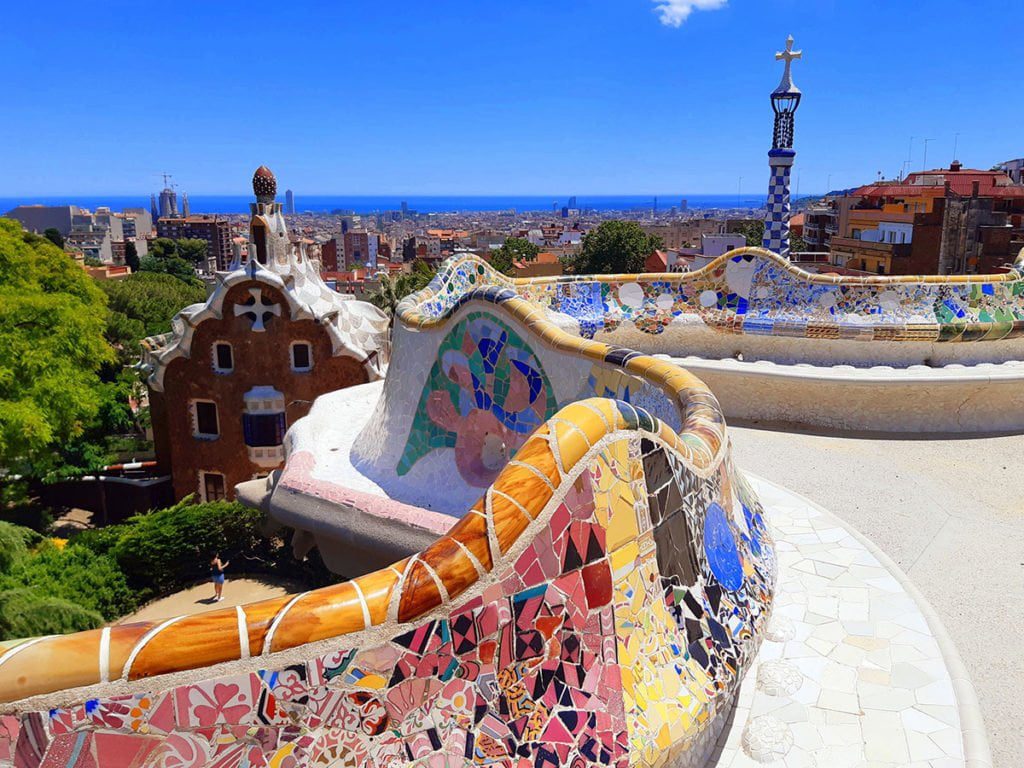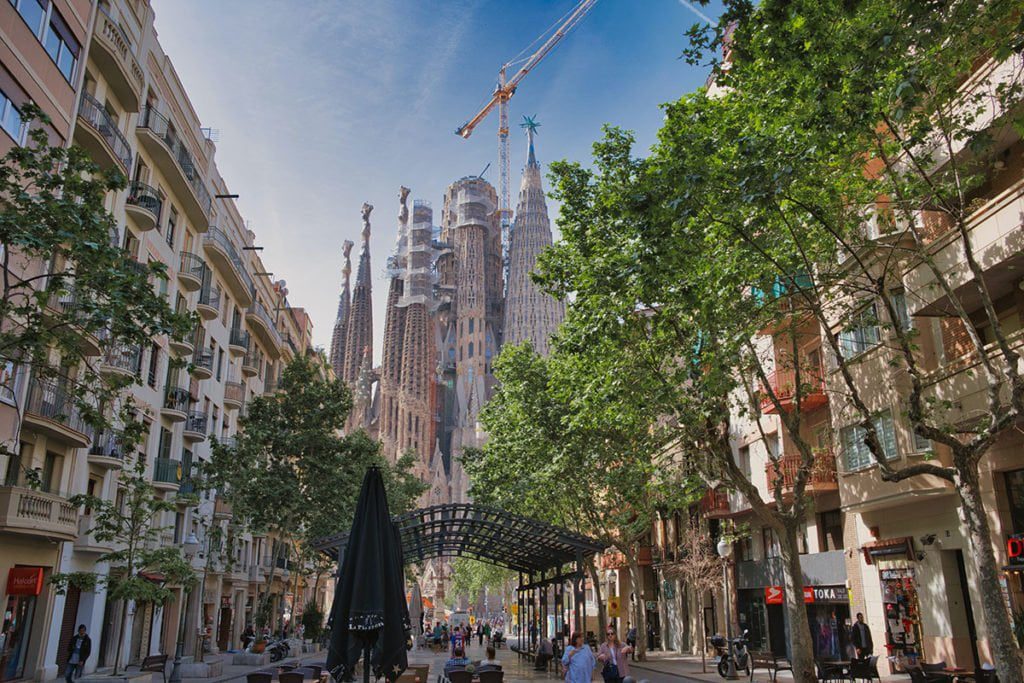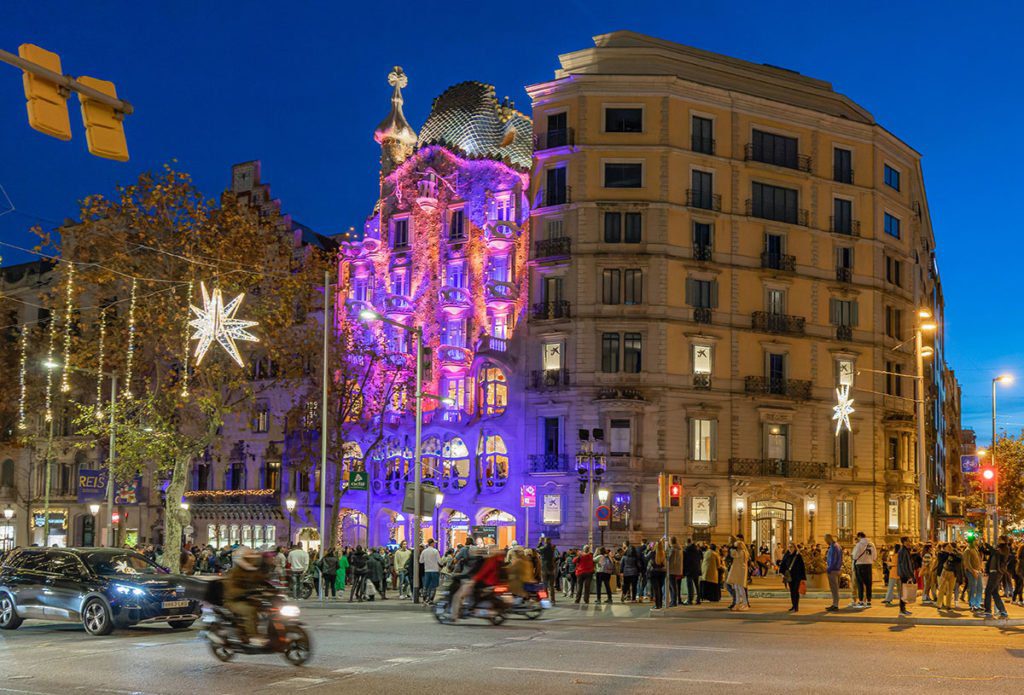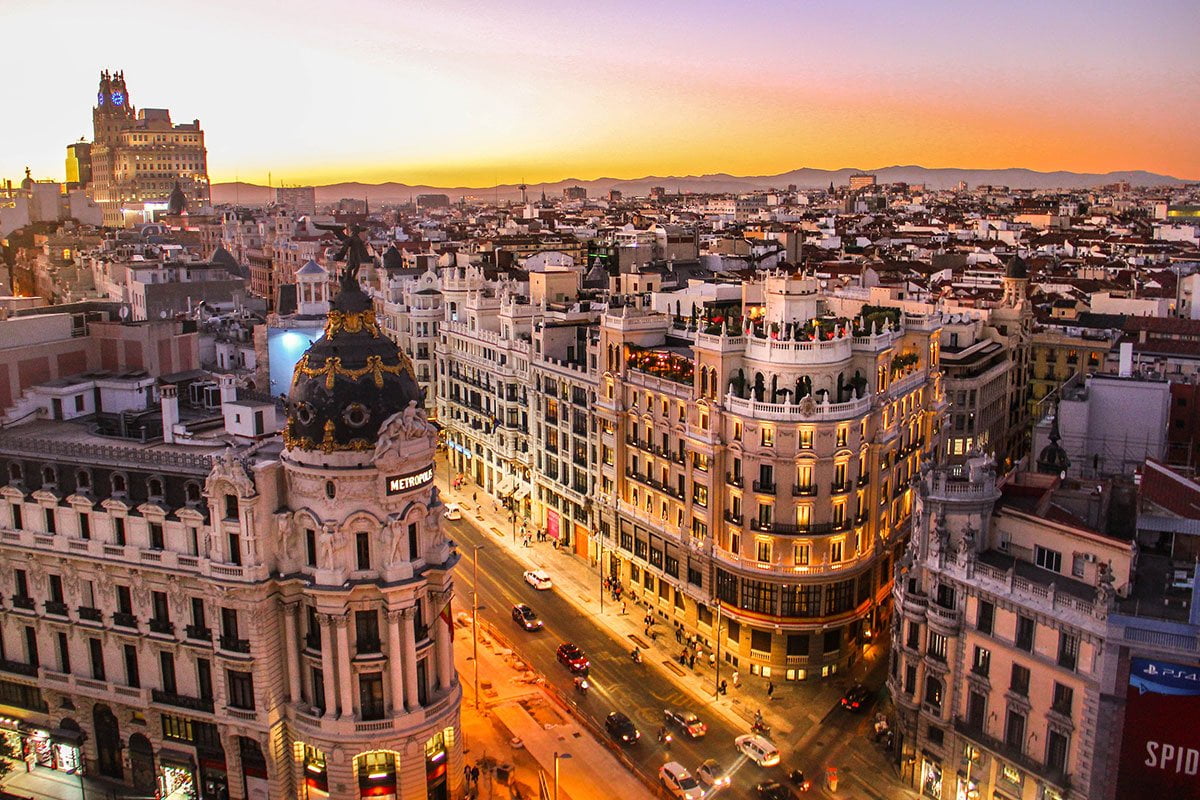Table of Contents
Barcelona is a city that has it all: culture, history, art, architecture, cuisine, nightlife, and more. Whether you are looking for a relaxing getaway or an adventurous exploration, Barcelona will not disappoint you. Here are 10 of the best things to see and do in this amazing city.
1. Park Güell
Park Güell is one of the most iconic and colorful creations of Antoni Gaudí, the famous Catalan architect who left his mark all over Barcelona. This park is a UNESCO World Heritage Site and a masterpiece of modernism, featuring whimsical structures, mosaic tiles, sculptures, and gardens. You can admire the views of the city from the main terrace, visit the Gaudí House Museum, or simply stroll around and enjoy nature and art.

Discover Barcelona Tours and Excursions!
Park Güell was originally conceived as a luxury residential estate by Eusebi Güell, a wealthy industrialist and patron of Gaudí. He was inspired by the English garden city movement and wanted to create a harmonious community in a natural setting. However, the project was not very successful and only two houses were built, one of which was occupied by Gaudí himself. The park was eventually donated to the city council in 1922 and opened to the public in 1926.
Park Güell is a reflection of Gaudí’s artistic vision and his love for nature. He used organic shapes, curved lines, and trencadís (a technique of using broken ceramic pieces) to create a unique and playful style. He also incorporated many symbols and motifs from Catalan culture, Christian faith, and Freemasonry. Some of the most remarkable elements of the park are the dragon fountain at the entrance, the serpentine bench that surrounds the terrace, the hall of columns that resemble a forest, and the portico of the washerwoman that evokes a wave.
2. Sagrada Familia
The Sagrada Familia is the most emblematic work of Antoni Gaudí, the renowned Catalan architect who dedicated his life to this project. He was commissioned to build this church in 1883, as a continuation of the original Neo-Gothic design by Francisco de Paula del Villa. However, Gaudí transformed the plan into his own visionary masterpiece, combining elements of Art Nouveau, Catalan Modernism, and Spanish Late Gothic design. The Sagrada Familia is not only a church but also a symbol of the Christian faith and the Catalan identity. It is a UNESCO World Heritage Site and one of the most visited attractions in Barcelona.
The Sagrada Familia is famous for its organic and expressive form, inspired by nature and geometry. Gaudí designed the church as a forest of stone, with 18 towers representing the Holy Family, the apostles, the evangelists, and Christ. The towers are adorned with pinnacles, crosses, and sculptures, and they vary in height according to their significance. The tallest tower, dedicated to Jesus, will reach 172.5 meters when completed.

Discover Barcelona Tours and Excursions!
The church has three grand façades, each depicting a stage of Christ’s life: the Nativity, the Passion, and the Glory. The façades are richly decorated with scenes, symbols, and figures, reflecting Gaudí’s deep knowledge of the Bible and the Christian tradition. The Nativity façade was the only one that Gaudí finished during his lifetime, and it shows his joy and optimism. The Passion façade was completed after his death, following his models and sketches, and it portrays his anguish and suffering. The Glory façade is still under construction, and it will represent his hope and glory.
The interior of the Sagrada Familia is a marvel of light and color. Gaudí designed the nave as a vaulted ceiling supported by slender columns that branch out like trees. The columns create a sense of harmony and rhythm, while the vaults create a sense of height and space. The stained glass windows filter the sunlight in different shades, creating a dynamic atmosphere that changes throughout the day. The windows also have symbolic meanings, such as the colors of the seasons, the virtues, and the sacraments.
The Sagrada Familia is a work in progress that reflects Gaudí’s vision and dedication. He worked on it until his death in 1926, when he was hit by a tram. He was buried in the crypt of the church, where he rests among his beloved creation. After his death, the construction continued under various architects and craftsmen, who followed his plans and models as faithfully as possible. The church is funded by donations from the public, who share Gaudí’s dream of building a temple for the people. The estimated completion date is 2026, to coincide with the centenary of Gaudí’s death.
3. Casa Batlló and Casa Milà
Casa Batlló and Casa Milà are two more examples of Gaudí’s genius and creativity. These buildings are located on Passeig de Gràcia, one of the most elegant avenues in Barcelona. Casa Batlló is also known as the House of Bones, because of its skeletal-like façade and balconies. Casa Milà is also called La Pedrera, meaning the Quarry, because of its wavy stone exterior. Both houses have impressive interiors that showcase Gaudí’s innovative design and style.

Discover Barcelona Tours and Excursions!
Casa Batlló was built between 1904 and 1906, as a renovation of an existing building. Gaudí transformed the façade with ceramic tiles, glass, and stone, creating a colorful and organic composition. The roof resembles the back of a dragon, while the balconies look like skulls and the columns like bones. The house is inspired by the legend of Saint George, the patron saint of Catalonia, who killed a dragon to save a princess.
Casa Milà was built between 1906 and 1912, as a new project for a wealthy couple. Gaudí designed a structure without load-bearing walls, using iron beams and columns instead. The façade is made of limestone blocks that curve and undulate, giving the impression of a natural formation. The house has two large courtyards that provide light and ventilation to the apartments. The roof has a spectacular terrace with chimneys and vents that look like sculptures.
4. The Turó de la Rovira Bunkers
If you want to escape the crowds and get a panoramic view of Barcelona, head to the Turó de la Rovira Bunkers. These bunkers were built during the Spanish Civil War as anti-aircraft defenses, but now they are a popular spot for locals and visitors who want to enjoy the scenery and the sunset. You can see the whole city from here, including the Sagrada Familia, Montjuïc, and the sea.
5. La Rambla
La Rambla is the most famous street in Barcelona and a must-see for any visitor. This pedestrian boulevard stretches for 1.2 kilometers from Plaça de Catalunya to the port, and it is lined with shops, cafés, restaurants, street performers, and flower stalls. You can also find some interesting landmarks along the way, such as La Boqueria Market, Liceu Opera House, Palau Güell, and the Columbus Monument.
6. Sant Pere, Santa Caterina i La Ribera – Born
Sant Pere, Santa Caterina i La Ribera – Born is one of the oldest and most charming neighborhoods in Barcelona. It is part of the Gothic Quarter, but it has its own identity and atmosphere. Here you can find medieval streets and buildings, trendy boutiques and bars, cultural venues and museums, and hidden gems like the Santa Maria del Mar Church, the Picasso Museum, and the Palau de la Música Catalana.
7. Picasso Museum
The Picasso Museum is one of the most visited museums in Barcelona and a must-see for art lovers. It houses a collection of more than 4,000 works by Pablo Picasso, one of the most influential artists of the 20th century. The museum covers his early years in Barcelona, his blue and rose periods, his cubist experiments, his later works, and his personal relationship with the city.
8. The Gothic Quarter
The Gothic Quarter is the historical heart of Barcelona and one of the most fascinating areas to explore. It dates back to Roman times and preserves many remnants of its past, such as walls, temples, towers, and gates. You can also admire some of the most beautiful Gothic buildings in Europe, such as the Cathedral of Barcelona, the City Hall, the Royal Palace, and many churches and palaces.
9. Montjuïc
Montjuïc is a hill that overlooks Barcelona and offers many attractions for visitors. You can take a cable car or a funicular to reach the top, where you can visit the Montjuïc Castle, a former fortress that now serves as a museum and a viewpoint. You can also enjoy some of the best cultural venues in Barcelona, such as the National Art Museum of Catalonia (MNAC), the Joan Miró Foundation, the Olympic Stadium, and the Magic Fountain.
10. Barceloneta Beach
Barcelona is a city by the sea, and Barceloneta Beach is one of the best places to enjoy it. This beach is located in the old fishermen’s quarter of Barceloneta, and it is a lively and popular spot for locals and tourists alike. You can sunbathe, swim, surf, play volleyball, or rent a bike and ride along the promenade. You can also find some of the best seafood restaurants and bars in the area.
Discover Barcelona Tours and Excursions Here!
FAQ Before Traveling to Spain
Do I need a visa to travel to Spain?
It depends on your nationality. Citizens from most European countries, the United States, Canada, Australia, and New Zealand do not need a visa for stays up to 90 days. However, it’s always best to check with the Spanish embassy or consulate in your home country to confirm the latest requirements.
What currency is used in Spain?
The euro (EUR) is the official currency of Spain. You can exchange your currency at the airport, banks, or currency exchange bureaus.
What language is spoken in Spain?
Spanish is the official language of Spain. However, Catalan, Basque, Galician, and Valencian are also spoken in certain regions. English is understood in tourist areas, but learning some basic Spanish phrases will be helpful.
What vaccinations are recommended?
The CDC recommends being up-to-date on routine vaccinations like measles, mumps, rubella (MMR), tetanus, diphtheria, and pertussis (Tdap). Additionally, consider getting vaccinated against hepatitis A and B if you plan on eating and drinking outside of tourist areas.
What kind of travel insurance should I get?
Travel insurance is highly recommended to protect yourself against unexpected events like trip cancellation, medical emergencies, and lost luggage. Choose a plan that covers your specific needs and activities.
How much money should I budget for my trip to Spain?
The cost of your trip will depend on your travel style, accommodation type, activities, and transportation choices. However, a good starting point is to budget around €100-€200 per day for basic expenses.
Additional Tips:
– Pack light and comfortable clothing suitable for the weather.
– Be aware of pickpockets, especially in crowded areas.
– Learn some basic Spanish phrases.
– Respect local customs and traditions.
– Try the local cuisine and drink Spanish wine.
– Have fun and enjoy your trip!
This FAQ is a general guide and may not cover every aspect of traveling to Spain. It’s always best to do your own research and consult with travel professionals for personalized recommendations.


